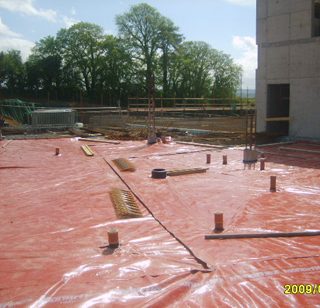DPM supply and install radon gas barrier membranes from a variety of different suppliers. The systems vary greatly in terms of cost and performance and great care should be taken when selecting membranes to ensure that they are fit for their intended purpose. Consideration should be given to the following points:
- Ground conditions – where is the water table? what gases (if any) are likely to be present? is air tightness a consideration for the overall build?
- Durability – Is there ample room on the site? an area overcrowded with tradesmen will almost certainly result in a damaged membrane.
- System design – relative settlement, DPC interface, radon permeability and moisture vapour transmission rates (MVT)
Please call us to discuss your project and we can advise you on best practice.


